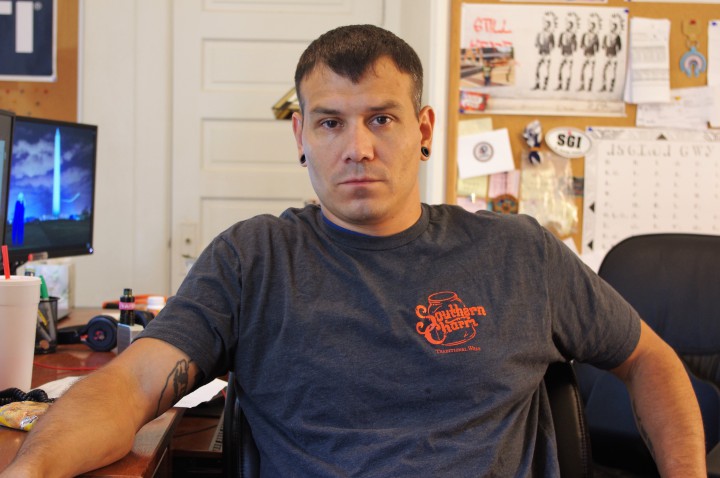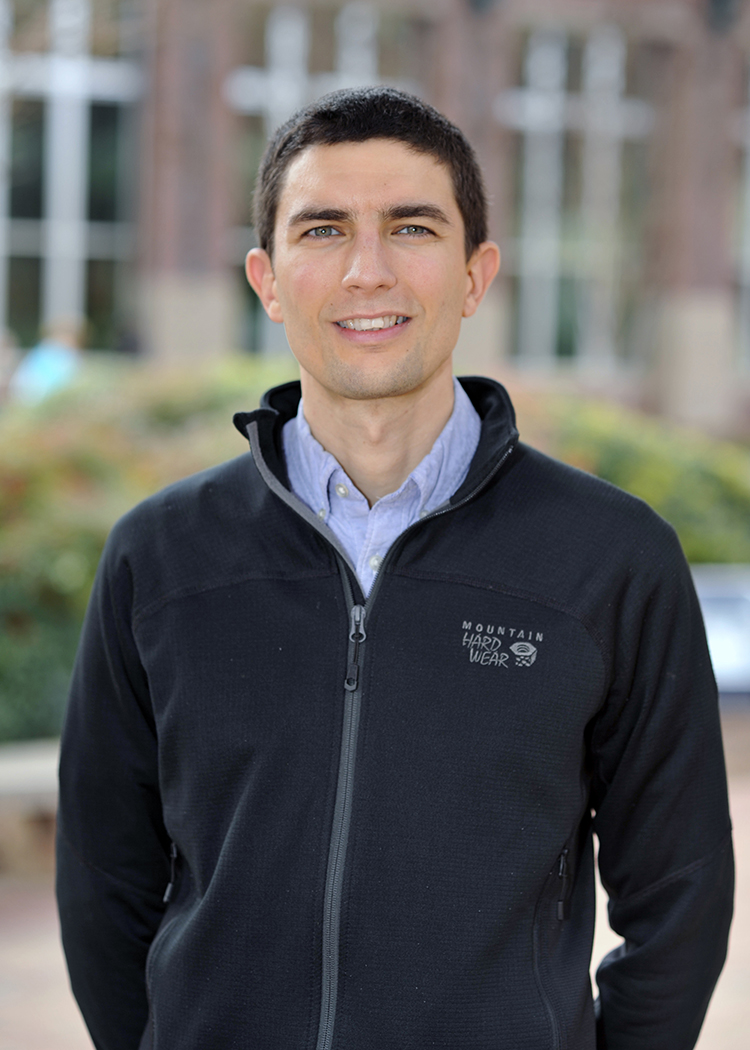As do many archaeologists, Ben Steere began his career as a field technician. “They’re affectionately called ‘shovel bums’ in the business,” he explains. In 2004, Steere had just completed his undergraduate degree in anthropology at Wake Forest University and moved to Western North Carolina, where he would spend the next two years collecting data for construction of the Cherokee Central School complex on Big Cove Road in Cherokee.
The experience changed his life. Steere recalls members of the Cherokee community visiting the site while the project was underway. They asked questions about the work and offered feedback to his team. Through these conversations, Steere notes, he developed a greater understanding of Cherokee culture. “That was really transformative for me,” he says. “There are plenty of anthropology programs where students never meet a Native American or get an indigenous perspective.”
Now an assistant professor at Western Carolina University, Steere leads courses in anthropology and archaeology; he also directs the university’s Cherokee studies program. And on Saturday, Aug. 11, the shovel-bum-turned-Ph.D. will present The Archaeology of Mounds & Towns at the Reuter Center at UNC Asheville. The talk, part of Steere’s ongoing research project, will address the evolution of household construction, trade patterns and lifestyles among native people. The presentation will also shed greater light on the complicated history between archaeologists and members of the Eastern Band of Cherokee.
Over the centuries
Cherokee mound building in WNC dates to A.D. 200. Several of these ancient sites still stand today, including the Biltmore Mound, located on the grounds of the Biltmore Estate. The meaning and function of the structures, however, changed significantly over time.
Steere notes that the earliest mounds served as platforms for ceremonial activities. But as indigenous people began forming permanent villages, the sites transformed into political and economic centers for their communities. By A.D. 1600, large public townhouses replaced the mounds and were often built directly atop their former sites.
“In contrast to platform mounds, which literally and metaphorically elevated the chief above other community members, townhouses were public structures which likely functioned as architectural symbols of the Cherokee town, emphasizing the importance of community identity over individual leadership,” Steere writes in his 2015 article, “Revisiting Platform Mounds and Townhouses in the Cherokee Heartland: A Collaborative Approach,” published in Southeastern Archaeology.
By the 19th century, war, smallpox and the Indian Removal Act had led to the disappearance and death of many Cherokee people in WNC. An estimated 1,000 members of the community managed to survive and remain in the region. But with a majority of the Cherokee gone, the structures that once marked the center of their villages fell to ruin, lost to time, neglect and antiquarian excavations.
Dehumanization
Along with overviewing Cherokee history, Steere also intends to discuss his own profession’s unscrupulous past among indigenous communities. “If you look historically, it hasn’t always been a great relationship,” he says. “Why, for example, are Native Americans and Native American artifacts included in natural history museums? Why are there so many Native American remains in the Smithsonian compared to other kinds of remains? It’s a dehumanizing thing.”

Tribe member Beau Carroll, who has worked with Steere on a number of projects, echoes these claims. Carroll, an archaeological technician for the Eastern Band Tribal Historic Preservation Office, notes that past archaeologists rarely considered ethical standards or made attempts at cultural understanding during their digs. In some cases, this indifference led to the desecration of gravesites. “They were highly educated looters,” Carroll says of previous generations. “That’s how I feel.”
Such behavior did not sit well with Carroll. But rather than discredit the entire profession, he immersed himself in the field, earning his master’s degree in anthropology from the University of Tennessee. “I realized Cherokee people didn’t have a voice in history,” Carroll says. “It seemed like they were never the actors in the story. They were always reacting to outside influence. I had a problem with that.”
A collaborative approach
Steere points to individuals like Carroll as a welcome and needed addition within the field. And both men are actively encouraging members of the Cherokee tribe to pursue careers in anthropology and archaeology as a way to bring a broader outlook to the profession.

“I think collaboration is really important in terms of undoing some of the long-term damage that exists between archaeologists and indigenous communities,” Steere says. “One of the many benefits is that it offers a different and more nuanced perspective on what these places mean.”
For Carroll, the advantages are both obvious and sensible. “When you’re working on a project about Cherokee people, it just seems practical to include Cherokee people,” he says.
If Steere’s ongoing research provides any indication, the future is promising. As he notes in his 2015 article, the Western North Carolina Mounds and Towns Project launched as a collaborative work with the Tribal Historic Preservation Office of the Eastern Band of Cherokee and the Coweeta Long Term Ecological Research Program at the University of Georgia.
“It’s shifting,” Carroll says, in reference to his subject’s steps toward greater inclusivity. “And I’m trying to do everything I can to speed it up.”
The Heartland
Steere emphasizes that Cherokee mounds do far more than simply indicate the former locations of historically significant tribal villages. They bridge the gap between the past and the present; they function as a reminder of what was and what still is. “I hope people take away from the talk more of an appreciation for Western North Carolina as this Cherokee heartland that really still has the evidence of Cherokee culture and Cherokee presence written onto the landscape,” he says.
“I know a lot of Cherokee students think about the Qualla Boundary as home,” he continues. “But when they drive over to Murphy, they’re passing through places that were densely occupied by Cherokees in the 18th century.” And while mounds and townhouses are less evident in today’s river valleys, Steere says, glimpses of the past — and potential new discoveries — still remain.
WHAT: The Archaeology of Mounds & Towns
WHERE: Reuter Center at UNC Asheville, 1 Campus View Road avl.mx/55s
WHEN: Saturday, Aug. 11, 2-3:30 p.m. $5 donation; free for Western North Carolina Historical Association members



Before you comment
The comments section is here to provide a platform for civil dialogue on the issues we face together as a local community. Xpress is committed to offering this platform for all voices, but when the tone of the discussion gets nasty or strays off topic, we believe many people choose not to participate. Xpress editors are determined to moderate comments to ensure a constructive interchange is maintained. All comments judged not to be in keeping with the spirit of civil discourse will be removed and repeat violators will be banned. See here for our terms of service. Thank you for being part of this effort to promote respectful discussion.